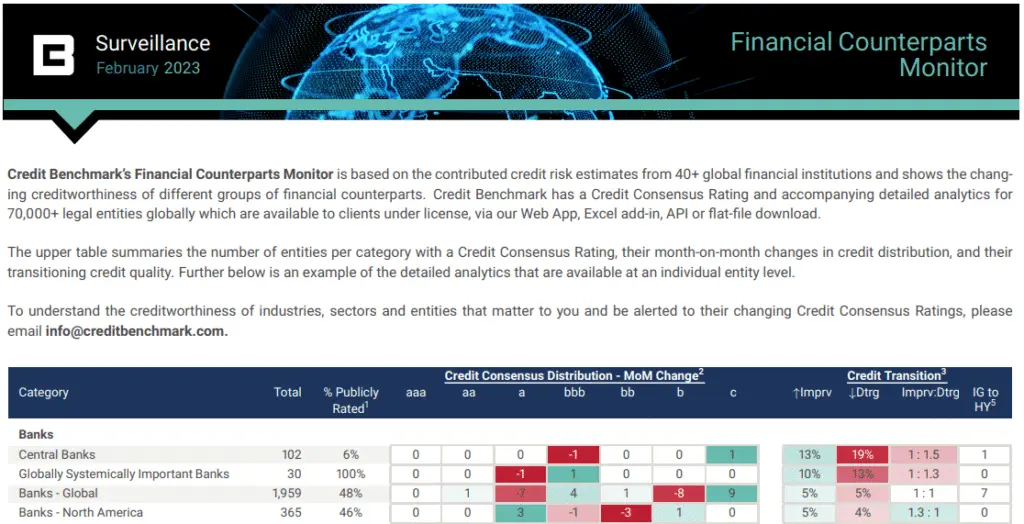Download the latest Financial Counterpart Monitor below.
The Financial Counterpart Monitor from Credit Benchmark provides a unique analysis of the changing creditworthiness of financial institutions.
Financials have seen a mixed bag in terms of credit movement this month across all counterpart categories.
Central Banks, Globally Systematically Important Banks (GSIBs), EMEA and APAC Banks all showed a bias towards credit deterioration this month, with improving to deteriorating ratios of 1:1.5, 1:1.3, 1:1.1 and 1:1.1 respectively. On the other hand, LATAM and North American Banks both showed a bias towards credit improvement, with improving to deteriorating ratios of 1.5:1 and 1.3:1 respectively. Global Banks came in at neutral.
The Intermediaries showed more instances of improvement than deterioration. Central Clearing Counterparts (CCP) came out on top with an improving to deteriorating ratio of 15.0:1. However, Prime Brokers were the most in the red with a ratio of 1.7 deteriorations to each improvement.
Amongst the Buy Side Managers, Asset Managers showed a bias towards credit deterioration this month, with an improving to deteriorating ratio of 1:1.6. Insurance Companies came in at neutral. For Buy Side Owners, the news was much better – all three groups saw net improvement, with Mutual Funds the best at 5.2:1 improvements to deteriorations.

The Financial Counterpart Monitor from Credit Benchmark provides a unique analysis of the changing creditworthiness of financial institutions. The report, which covers banks, intermediaries, buy-side managers, and buy-side owners, summarizes the changes in credit consensus of each group as well as their current credit distribution and count of entities that have migrated from Investment Grade to High Yield.
The data, which is based on the credit risk views of Credit Benchmark’s contributing financial institutions, is also available at the legal entity level. Users of the data can monitor and be alerted to the changing credit consensus of their financial counterparts.
